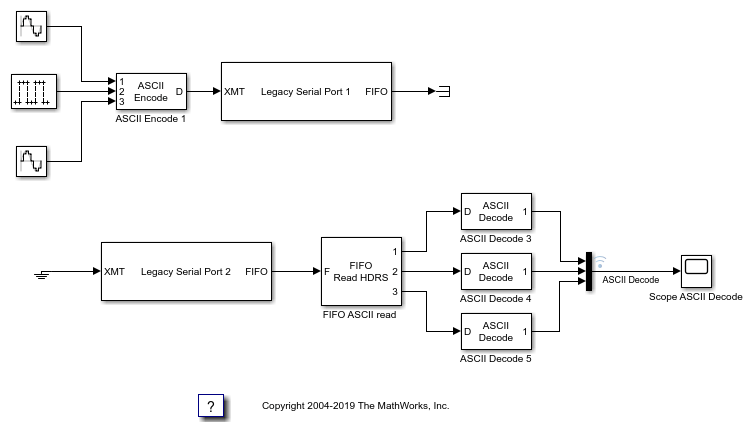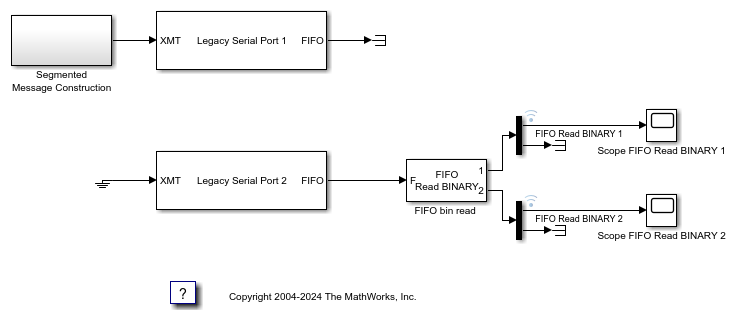Modem Control
Control state of RTS and DTR output lines on serial port
Libraries:
Simulink Real-Time /
RS232 /
Mainboard
Description
The Modem Control block controls the state of either or both of the Request To Send (RTS) and Data Terminal Ready (DTR) output lines of the serial port on the Speedgoat® target computer. To choose which output lines to control, select the RTS and DTR parameters.
Examples
Ports
Input
Parameters
Extended Capabilities
Version History
Introduced in R2020b








